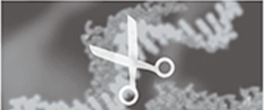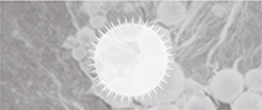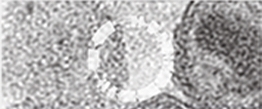Get everything you need for studying and using exosomes, from isolation and characterization, to cargo profiling and engineering, and more. Whatever methods you choose—whether you use ExoQuick or density gradient ultracentrifugation, want qPCR-based exosomal miRNA profiling or RNA-Seq methods—we’ve got the high-quality exosome research products to support your science and advance your work.
Exosome Research Products
Supporting all aspects of your exosome research, SBI’s products enable quantitative, high-throughput, and high quality studies and deliver unparalleled capabilities
Exosome Quantitation Kits & Products
Exosome Biomarker Discovery Products
Exosome Engineering & Design Products
PURIFIED EXOSOMES
RESOURCES
EXOQUICK FAQS
How do I decide which ExoQuick product to start with? ExoQuick or ExoQuick-TC??
ExoQuick should be used with biofluids that have a high concentration of exosomes like serum, plasma, or ascites fluid. ExoQuick-TC should be used with biofluids that are dilute and contain a lower concentration of exosomes like tissue culture (cell culture) media, urine, and CSF.
Can I freeze my biofluid before using ExoQuick or ExoQuick-TC to isolate the exosomes?
Yes! Biofluids can be frozen following their isolation/preparation and should be thawed on ice. Once thawed, you can proceed with the regular ExoQuick or ExoQuick-TC protocol.
What are the typical yields of exosome, protein and RNAs from various biological fluids?
See the values in the Table below. These are average yields.
| Biological Fluid | Starting Volume | Number of Particles | Amount of Protein | Amount of RNA |
|---|---|---|---|---|
| Serum/ Plasma | 250 uL | 7 x10^10 | 5 mg | 50 ng |
| Urine (typical) | 10 mL | 3 x10^11 | 25 ug | 10 ng |
| Tissue Culture Media | 10 mL | This depends on the type of cells that were grown in culture and how many exosomes they secrete | ||
When I used ExoQuick, a large insoluble pellet was obtained and now it is difficult to work with.What should I do?
Typically, this happens if starting with plasma or serum. With plasma, there are a lot of fibrins and fibrinogens that also get precipitated with ExoQuick. We recommend adding the Thromboplastin D protocol before adding the ExoQuick, per the steps in the user manual. For serum, this typically occurs if you have incubated the ExoQuick with the serum for too long, or if the centrifugation step was too long. See the troubleshooting table below.
| Biological Fluid | Preparation steps | ExoQuick product to use | Volume of Fluid: ExoQuick | Incubation Time | Centrifugation Speed/ Length of Spin |
|---|---|---|---|---|---|
| Serum | None | ExoQuick | 4:1 (v:v) | 30 minutes | 13,000 rpm/ 2 min |
| Plasma | Thromboplastin D treatment. See supporting protocol in User Manual (link) | ExoQuick | 4:1 (v:v) | 30 minutes | 13,000 rpm/ 2 min |
What should I resuspend the precipitated exosomes with?
This depends on what you want to do with the exosomes. Follow the guidelines here:
| Further Application | Buffer to use |
|---|---|
| Western Blotting | RIPA buffer |
| ExoELISA | Exosome Binding Buffer |
| RNA isolation | Lysis Buffer for RNA extraction kit |
| Exosome transfer studies | Water, PBS, DMEM, or other media |





